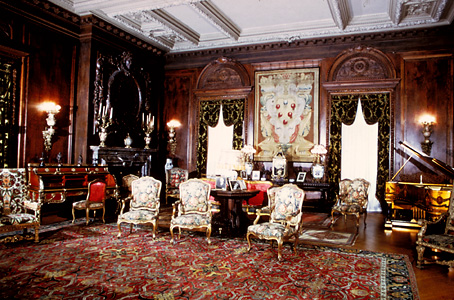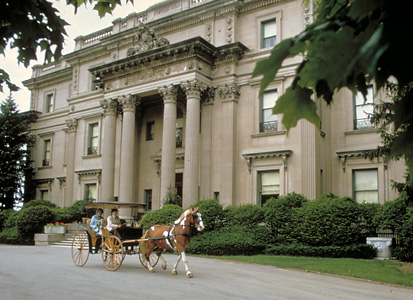Vanderbilt Mansion National Historic Site, in Hyde Park, New York, features an estate built by wealthy businessman Frederick William Vanderbilt. Vanderbilt came from a rich and powerful family. His grandfather Cornelius Vanderbilt began the family fortune with profits from the railroad and shipping industries.

In 1895, Frederick Vanderbilt bought a house and land in New York’s wooded Hyde Park area. He intended to use the property as a refuge from his busy social life in New York City. When the house proved structurally unsound, Vanderbilt demolished it and built a new 50-room mansion. He and his wife, Louise, moved into the mansion in 1898, though it was not completed until 1899. The Vanderbilts used the house as a vacation home, living there for a few weeks in the spring and fall.
The New York architect Charles Follen McKim designed the mansion to look like the ancestral home of a noble European family. To strengthen the effect, architect Stanford White, McKim’s partner, traveled to London, Paris, and the Italian cities Florence, Rome, and Venice in search of antique furnishings for the home.

Visitors to the Vanderbilt Mansion National Historic Site can tour the fully furnished mansion. The grounds feature many species of trees and offer a spectacular view of the Hudson River and the Catskill Mountains. Vanderbilt’s formal gardens are also open to the public.
After Vanderbilt died in 1938, his niece Margaret Van Alen inherited the estate. The next year, she offered the mansion to President Franklin D. Roosevelt as a memorial to her uncle. The mansion opened to the public as a national historic site in 1940. The National Park Service maintains the house. A separate group of volunteers called the Frederick W. Vanderbilt Garden Association restores and maintains Vanderbilt’s formal gardens.
